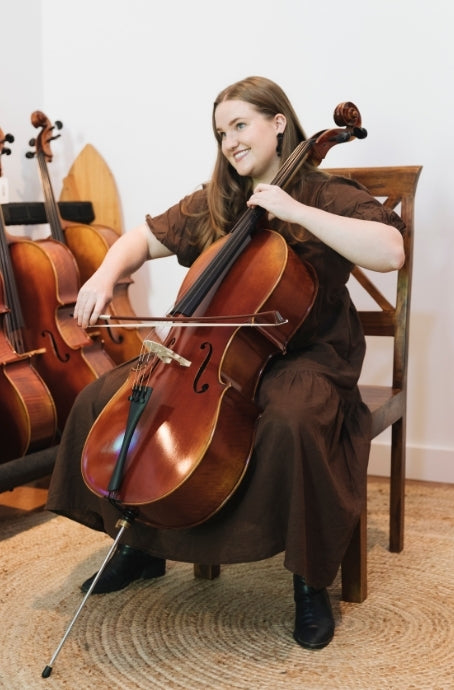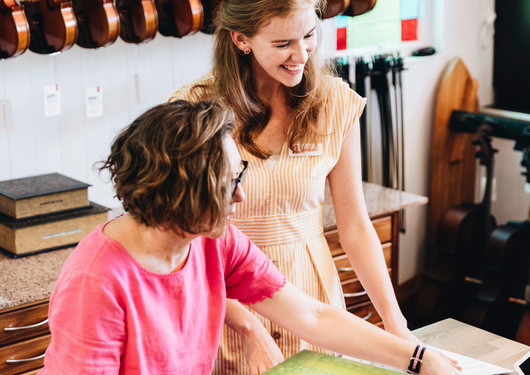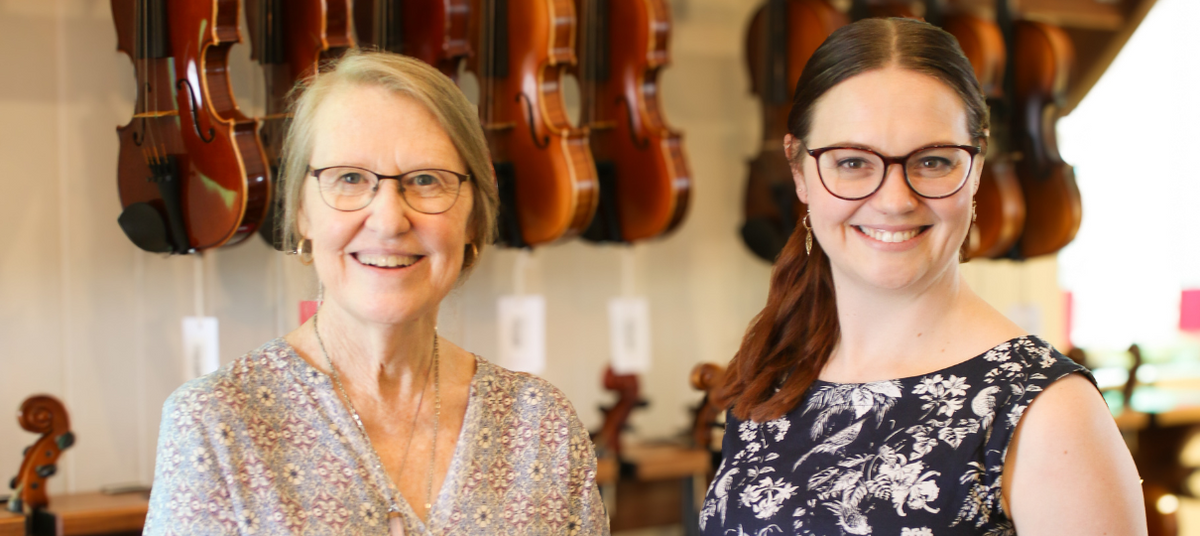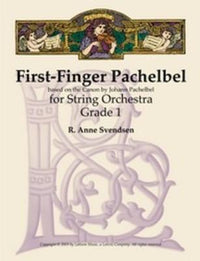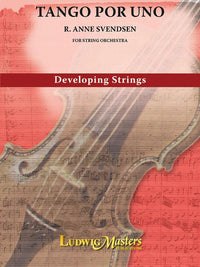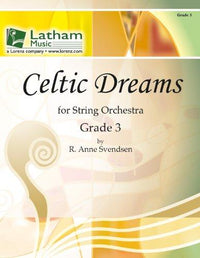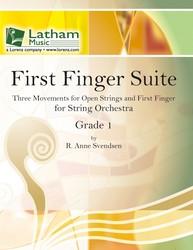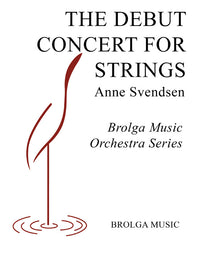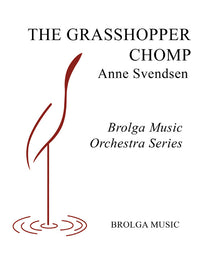Here in Queensland, we are incredibly lucky to be the home of several leading composers and pedagogues. String educators including Stephen Chin, Loreta Fin, Timo Jarvela, Keith Sharp, Anne Svendsen and Neridah Oostenbroek are not only remarkable composers, but they are also regular visitors at our Red Hill store! We’re privileged to support these local composers and teachers, and have had a chat with them over coffee about their compositions, learning methods, and what lies ahead for them in 2024.
In our first interview of our new Coffee with Composers series, our Education Manager Jacqui sat down with the incredible Anne Svendsen.
Working and living on the picturesque Central Queensland coast, Anne is a composer, educator, performer, and creative who is a treasure to our Queensland music community. Anne was an Instrumental Music teacher in both Brisbane and Rockhampton for a mammoth 38 years, and has continued composing and writing string orchestra repertoire for all levels. Jacqui sat down with Anne on a rather warm and humid day (thankfully, in our store’s air conditioning!) to learn more about Anne’s compositions, her inspirations, and what is coming in 2024.
Where do you find inspiration? What spurs a new piece in you?
It’s usually the students. It comes from not having access to pieces that aren’t going to work for that particular group. You want something that's going to appeal to the students so they are actually keen to play it. But also that it’s going to suit their level so they all have some success, and when they go on stage they don’t all freak out and feel confident. And, it’s musical!
That’s pretty much how it started. I hadn’t ever thought of myself as a composer, it was just that I needed pieces for string orchestra, and I thought I’m sure I can sit down and write something. And I did, and it worked! Because you can tailor it to your students. Then, when I had to send it to a publisher, it was usually the case that Lyn Latham would say, "Anne, the double basses don’t have enough to do", or that the violas didn’t have enough, I would have to add to it but otherwise she left most of it as it was!
And I think that explains a bit about the different levels of repertoire you have. You have some early, entry-level pieces, then you have your early to middle school, as well as some really advanced works which look quite fun but they're definitely hard!
I did a lot of first finger pieces and they create a lot of discussion pedagogically as a lot of teachers don’t always agree. My reason behind the first finger stuff has nothing to do with any core fundamentals of hand placement - I agree with them about the importance of the 3rd finger especially in cello and bass! - but if students have already been taught to do the correct hand position, putting your first finger down should not affect the hand position. My other main reason for these pieces was that students were spending so much time on the A and the D strings, and they didn’t really branch out! The first finger pieces enable them to explore more - and of course, the cellists and double bassists love getting down on those bottom strings - you give it to them and they go "YEAH!", and violinists get to play a little on the E. It also gives them the opportunity to work on style - like the Tango Por Uno lets them learn how to play in the Tango style. There’s a really good YouTube video of a youth orchestra in America and they really have captured the style; even though they’re primary school kids, they’re playing in the right part of the bow, and that’s what I really was focussing on - let’s get them playing music, using the bow, and learning different strings, without having to worry so much about left hand notes.

Here’s a fun question... what’s your favourite piece of music?
My favourite piece of music is Pachelbel's Canon!
Really?!?! You’re not sick of it after 38 years of teaching?
I’m even a cellist - isn’t it unusual? I really love Pachelbel’s Canon. I love the fact that I can sit there and play my 8 notes, listen to different blends of the upper strings and how they come in and what they play. I just enjoy the whole experience, because it’s different every time you play with different people! Everyone plays it differently. Some violinists start quite fast, others start slow, and it’s really interesting what they can do. It’s also such a lovely chord progression and, you know, if you’re playing it at a wedding you can watch the bride. I just love it!
I was listening to some of your repertoire this morning and it’s almost like your piece ‘Fairly Fugal’ is kind of similar in a way. Is there a link between the two for you?
No, not really. They came about as two separate things, but I think that maybe Pachelbel did influence me, in that it always fascinated me how that sort of piece can work as a round or as a fugue. You can do whatever you like on top of the ground bass and so I think the ground bass idea has always really appealed to me anyway as a composer and as a performer - I like being the ground bass.
I’ve done a bit of early music as well and it’s always really nice having a ground bass! You’re like, [collective breath out], literally grounded. But all the inventions that people come up with… I would not have thought of those.
I think it’s fascinating. I love trying it out with my sequencer at home, just putting the ground bass in as I’m playing. I guess ‘Fairly Fugal’ did come a little bit from a similar place. The piece actually came out of my time at my first school. I’d been transferred from Rockhampton and we'd moved to Brisbane, and in my first year I had a really really good orchestra, and I thought, "Okay, we need to do something [suitable]", they were good but they were scattered. There was no real discipline vertically in terms of listening across the orchestra, so I thought well they’ve already played the Brandenburg Concertos, but we wanted to play in the Festival of Music. That’s why I wrote it. It’s all in first position - with a few extensions but nothing terribly tricky. Everyone gets something to do and it’s busy, but it’s enough for them to actually feel like they're actually doing something. It also trains students to align [within the ensemble] to make sure you’re also together. That’s how it kind of came about.
Are you working on anything new?
Yes! I’ve done an arrangement of a sea shanty! I knew about sea shanties but this particular friend of ours came over and said "I've got to play a song for you", and she sat down and played this song. We had friends over at the time and we all enjoyed singing it - it was great! Then we watched a YouTube clip of who had inspired our friend to learn the song. My husband, who is a great inspiration to me as well - he always gives me great ideas - he said, ‘Why don't you try arranging it for strings and see how it goes?’ So, I had a go doing that and it's done! It’s being tried out by a school here in Brisbane and they recorded it for me and it sounded great. It was fantastic to hear how it went and how it worked - especially now that I don’t work within Education Queensland, I need someone to try out my pieces to make sure there aren’t any typos or errors! I do have another piece that actually hasn't been published which I think I'll publish myself - I've taken ‘Click Go the Shears’ and I've put it in the minor key, and I’ve written parts in a very middle European way. It was quite freeing to write something like this - after writing so much for students and within certain levels, it was a lot of fun.
I’m also working on a ‘Young Masters Concert’ - the next one from the Debut Concert series! I’m starting to work on that one at the moment. It’s not going to be focussed on vertical movement and two part melodies as much - rather, there will be more independent parts, and there will be more introduction of slurs, more complicated rhythms, and naturals and key changes to explore a bit more! But again, they won’t be long pieces, just short pieces that you can put into a concert program easily.

What advice would you give to teachers, particularly early career teachers, in terms of choosing repertoire and selecting learning methods?
For choosing repertoire, always choose repertoire which is the middle to lower part of the standard of your group. Don’t choose repertoire that suits your 1st violins only. You’ll find more success choosing something that you know the 1sts violins will be able to play, but is only just a challenge for your lower strings.
For teaching methods, it's really hard to choose because there are so many methods out there! I have learned from teaching out of method books, that they are laid out in a particular order for a reason. Sometimes, you have to just do concept work - so you might just take the top line of this page, the top line of that page, et cetera, and then when you go back to revise, you can take the next line, and so forth. Rather than doing a whole page, which might be too challenging, you might want to learn just one line and then keep moving through the book and come back later. It does depend on how the book is laid out, but I have found this to be quite helpful in that I stopped trying to expect the students to be able to get through that page, and then just keep them learning concepts and revising them later.
Would you do a learning method yourself, or do you think there are too many out there already?
I am considering doing a learning method actually, and it’s something I can see in the future. Mine is more double bass focused. What do double bass players need to be able to do? Shifting! It’s really focused around building that facility. Violinists don’t need to shift to go anywhere or use their 4th finger for quite a while in learning, whereas double basses have to shift into position to play a D major scale. It’s more about what the double bassists need rather than them being an afterthought. That’s where I’m coming from.
Your catalogue is certainly growing - which is lovely to see! But, what do you do when you hit writer’s block?
If I'm really stuck, I sometimes go to my keyboard and I’ll put in different styles and improvise in that style to try and get a rhythm or backing accompaniment. That gives me a bit of inspiration. Or if I’ve got a bit of melody and I'm not really sure what to do with it, just putting it into a different style and seeing what happens actually helps a lot, and it gives me some different ideas. Or, I’ll just put on some music on YouTube or something. Instrumental music mostly - I don’t usually go for songs. I’m a jazz person, I really love jazz and I like listening to the sounds of different instruments.
Do you often use your sequencer as well when looking for ideas? I love that you’re integrating your technology and love for improvisations with the more traditional writing of string music.
Yes, sometimes - especially if I have either a melody or harmony but not the other. It’s quite freeing.
We hope you found our conversation with Anne as delightful as we did, gaining deeper insight into her remarkable passion for music education and composition. We're excited for the chance to delve into the creative journeys of more local composers in our upcoming interviews. Be sure to stay tuned for the next edition of Coffee with Composers, where we'll continue to uncover the captivating world of music creation with our exceptional local talents.





